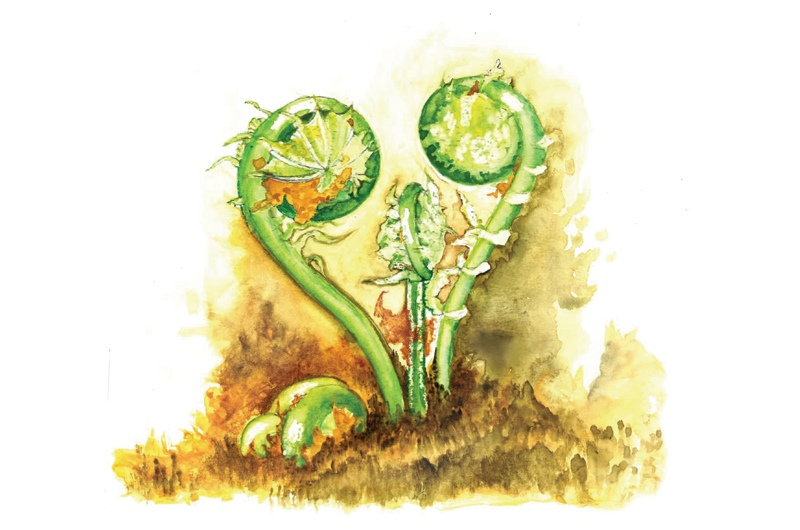A fern is a fern is a fern is a fern, except for a brief time when it’s a fiddlehead. In early May the ostrich fern bursts forth from the ground, its tightly coiled head resembling that of a violin. During this time it becomes something of a blink-and-you’ll-miss-it delicacy, with a woody taste and texture similar to asparagus. After a few short days the fiddlehead sheds its brown coat and unravels, and just like that a fern is a fern is a fern once again.
Where to look: Search in shady areas near bodies of water. (Ferns that grow far from water are not the same type, and can be toxic. As always, consult a guidebook if you’re unsure about identification.) Fiddleheads need to be harvested when the stems are still bright green, one to two inches long, and covered with a paper-like brown chaff. Once the fern straightens out or the leaves turn brown, it’s too late to harvest. Do not eat mature fern leaves.
How to use: Fiddleheads can be cooked and used much like you would prepare green beans or asparagus – but they must be cooked; raw fiddleheads have been known to make some people sick. Rinse them and remove the chaff. Try them boiled, steamed, or sautéed with garlic or leeks, or added to risotto or pasta.
“I come from haunts of coot and hern, I make a sudden sally, And sparkle among the fern, To bicker down a valley.”
– Lord Alfred Tennyson







